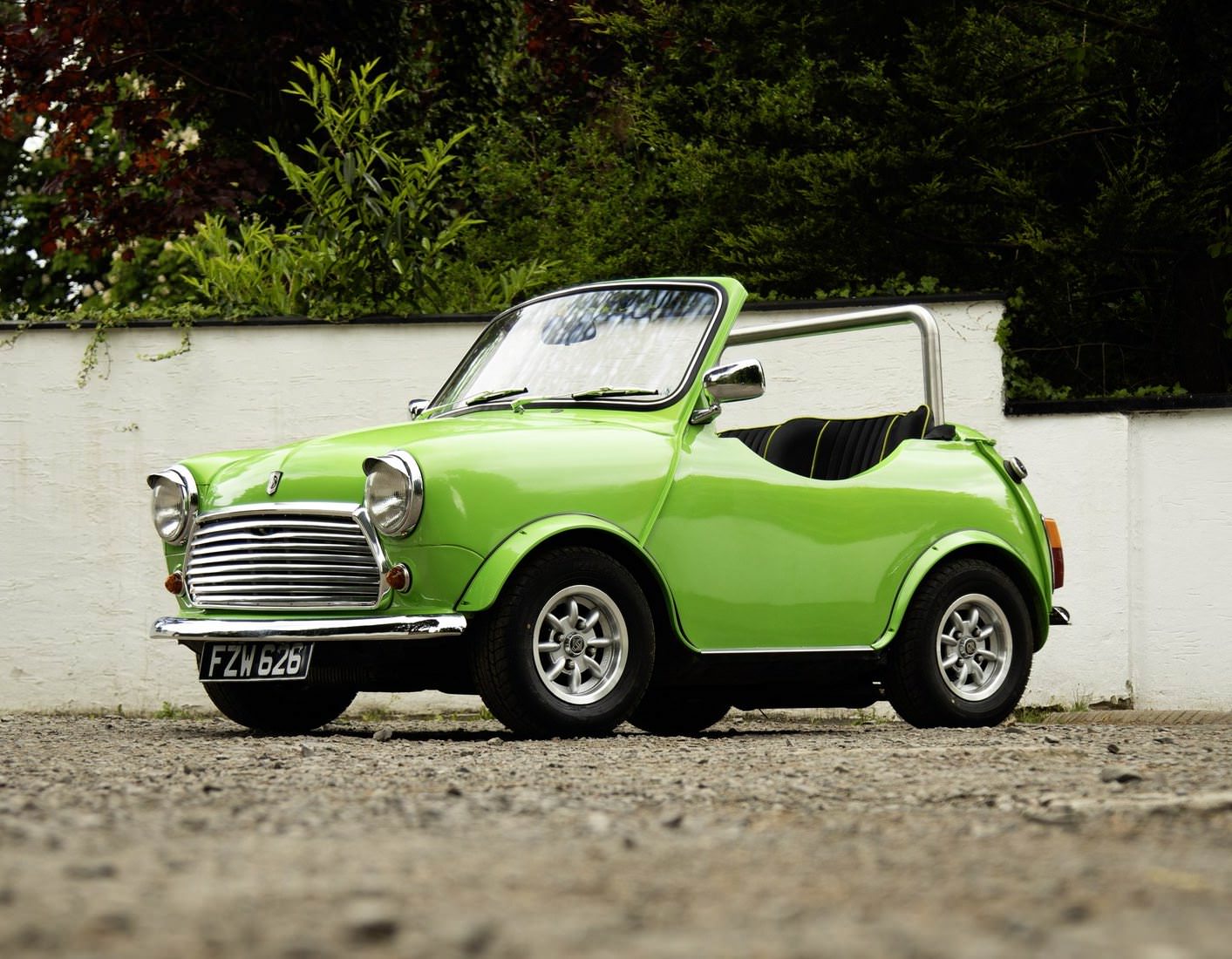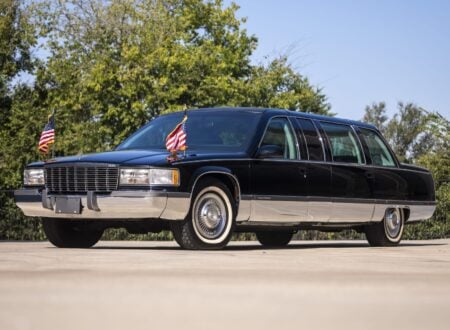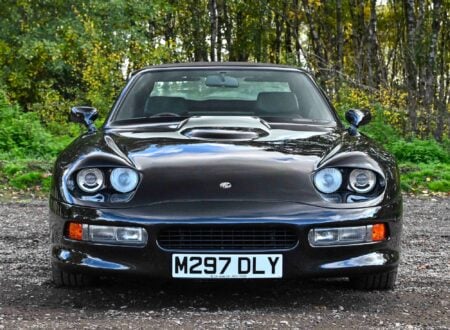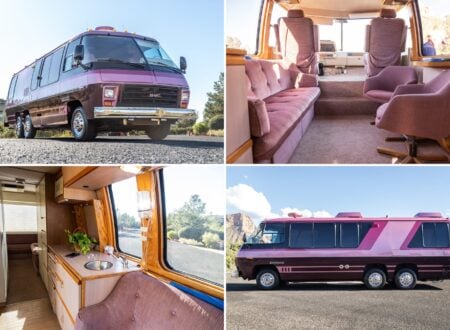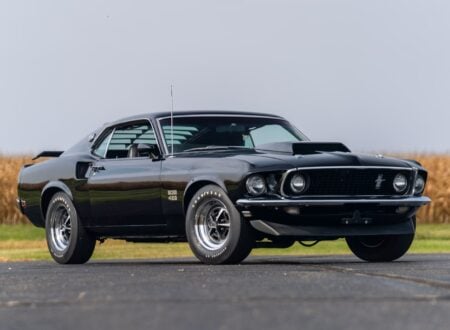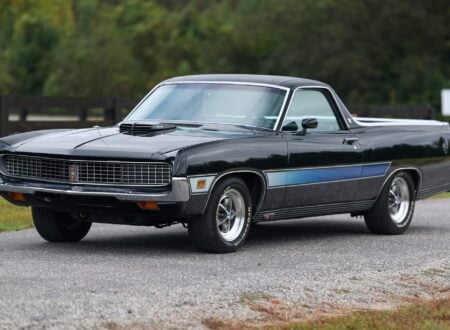This is a “Shorty” Mini, a 1978 Leyland Mini that’s been given the chop and had its wheelbase reduced significantly. These cars are lighter than their full-length counterparts and so they tend to be quite quick off the line.
Exactly who built the first Shorty Mini is lost to history, but over the last few decades it seems that quite a few of them have been built with both convertible and tin-top versions being popular on both sides of the Atlantic.
Fast Facts – The “Shorty” Mini
- This “Shorty” Mini is a heavily modified version of the classic 1978 Leyland Mini with a significantly shortened wheelbase, resulting in lower weight and subsequently improved acceleration. These conversions have become a niche custom trend over the past few decades, though the identity of the original inventor remains unknown.
- Originating in 1959, the Mini was developed by the British Motor Corporation in response to the Suez Crisis, developed for compact size, efficiency, and affordability. Its transverse engine and front-wheel-drive layout set a precedent that influenced generations of small car designs globally.
- The Mini became a cultural symbol in the 1960s, its affordability, charm, and unexpected motorsport success – especially with the John Cooper-tuned variants that won multiple Monte Carlo Rallies – established its status as a true British icon.
- The Shorty Mini featured here began as a 1978 Leyland Mini and underwent its conversion roughly 12 years ago. Now for sale in Northern Ireland, it has recently been refreshed with new upholstery, chrome, tires, and other cosmetic updates, and retains its period-correct transverse inline-four engine with 4-speed manual gearbox.
History Speedrun: The Original Mini
The original Mini was developed by the British Motor Corporation (BMC) and launched in 1959, as a response to the Suez Crisis and the subsequent demand for affordable, fuel-efficient cars in Britain.
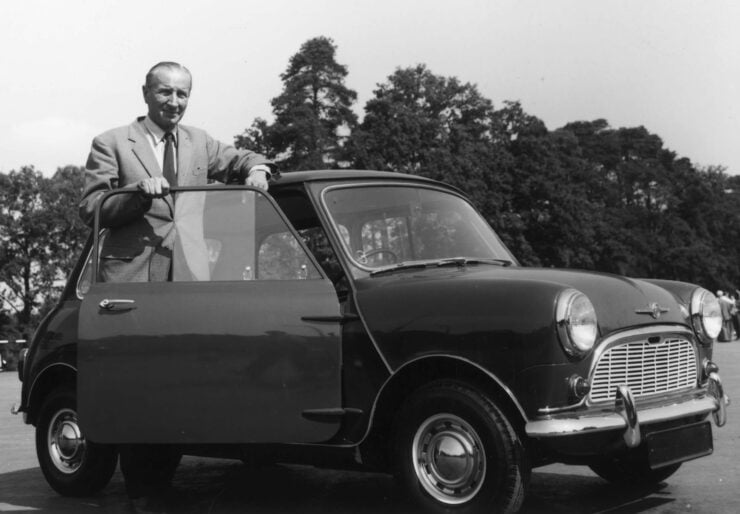

Designed by Alec Issigonis, the Mini broke from conventional automotive design norms with a transverse, front-mounted four-cylinder engine layout and front-wheel drive.
The fact that the engine was mounted “sideways” under the hood along with the transmission, meant that there was no need for a central tunnel in the car, and the floorpan would be notably lower than a normal (for the time) front-engined, rear-wheel drive car.
The car’s official model names were the Austin Seven and Morris Mini-Minor, which were sold under BMC’s respective brands. In 1961, the name “Mini” began appearing as a standalone marque and was officially adopted across the range in 1969.
The Mini became a cultural icon in the 1960s, it was embraced by a generation of young Britons during the Swinging Sixties era and was famously driven by major celebrities including The Beatles, Peter Sellers, and even Queen Elizabeth II. The Mini’s association with style and countercultural identity helped elevate it from a simple, cheap car to a symbol of modern British industrial design.
Under the oversight of legendary engineer John Cooper, a performance-oriented version known as the Mini Cooper was introduced in 1961. These models would become highly successful in international rallying, winning the Monte Carlo Rally in 1964, 1965, and 1967. The Mini Cooper would become a true giant killer on race tracks across Britain, Europe, the United States, and as far away as Australia.
Production of the classic Mini spanned four decades, running continuously from 1959 until the year 2000. Over 5.3 million were built, making it the most successful British car of all time by sales volume.
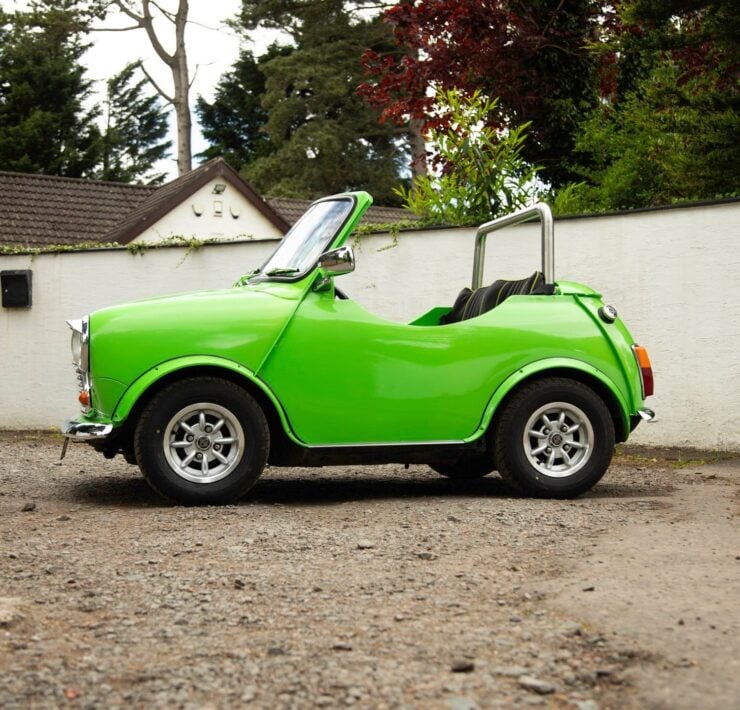

The influence that the Mini had on the global automotive landscape is hard to overstate – a vast percentage of modern economy cars now have a transversely-front-mounted four-cylinder engine powering the front wheels – just like the Mini.
The “Shorty” Mini Shown Here
The car you see here is a “Shorty” Mini that was apparently built 12 tears ago. It seems it was driven for a couple of years before being stored away for a decade, then it was bought by the current owner (and now seller).
The current owner has fitted a new battery and a new set of tires, they’ve reupholstered the seats, added new carpet, new bumpers, a new grille, and new chrome all around. The car started life as a 1978 Leyland Mini powered by the classic transverse inline-four mated to a 4-speed manual transmission.
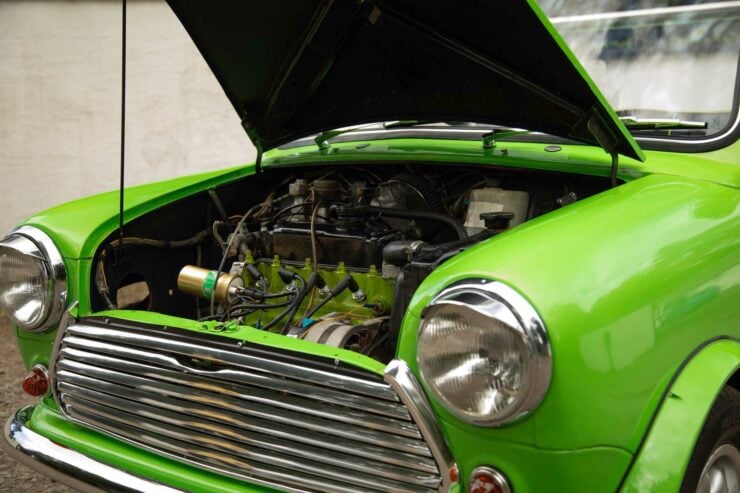

The car is now being offered for sale on Car & Classic out of Northern Ireland. It comes with the last Irish NCT which expired in March of 2024, Irish registration documentation, and several invoices from specialists including P&L Minis.
If you’d like to read more about the car or place a bid you can visit the listing here. It’s worth noting that the listing doesn’t mention the engine displacement, but as a 1978 Leyland Mini it’s most likely to have either an 848cc or 998cc BMC A-series engine, with a possibility of it being the higher-performance 1,098cc unit.
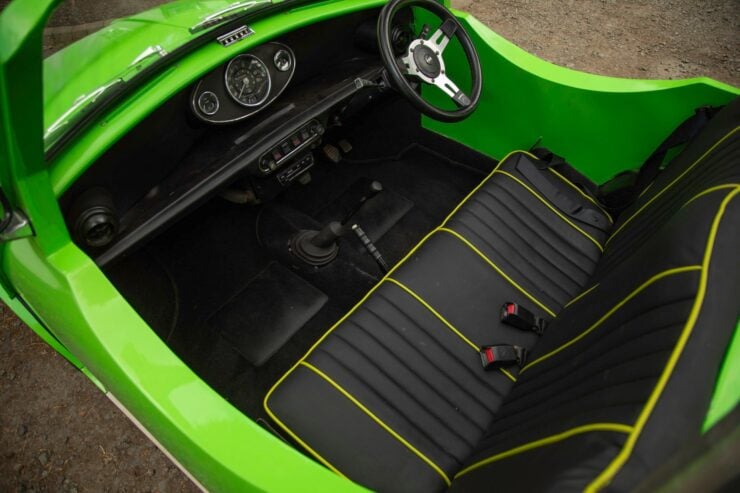
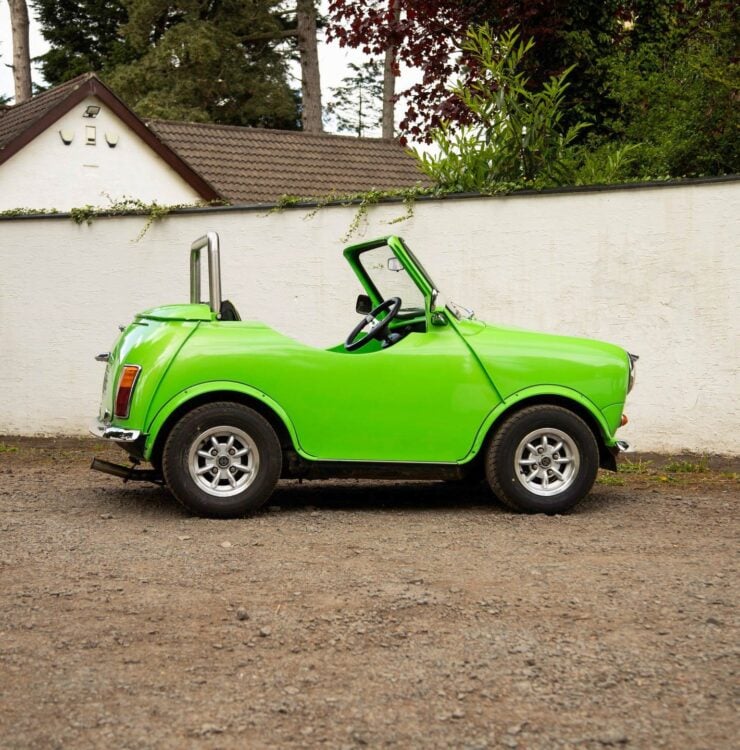
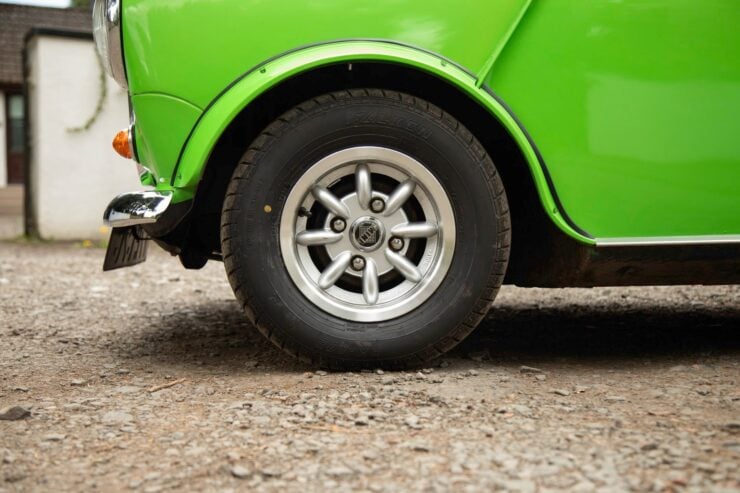
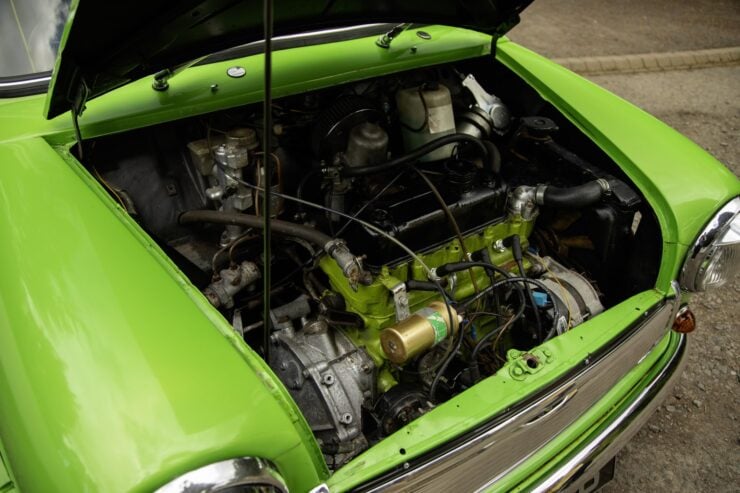
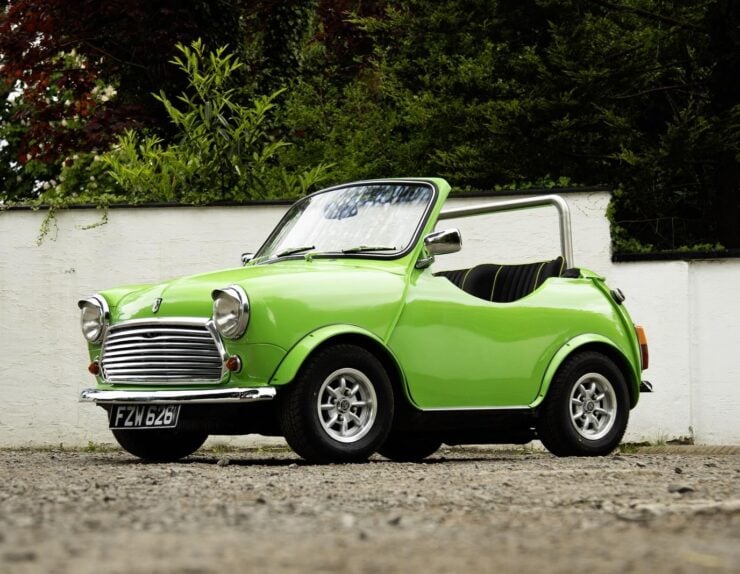
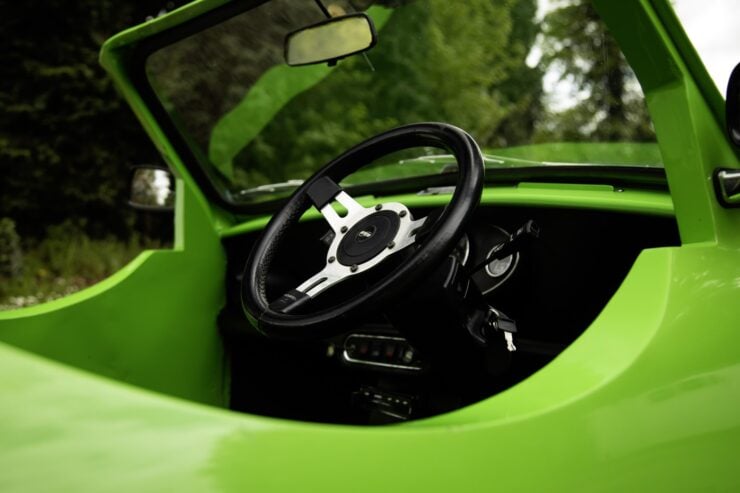
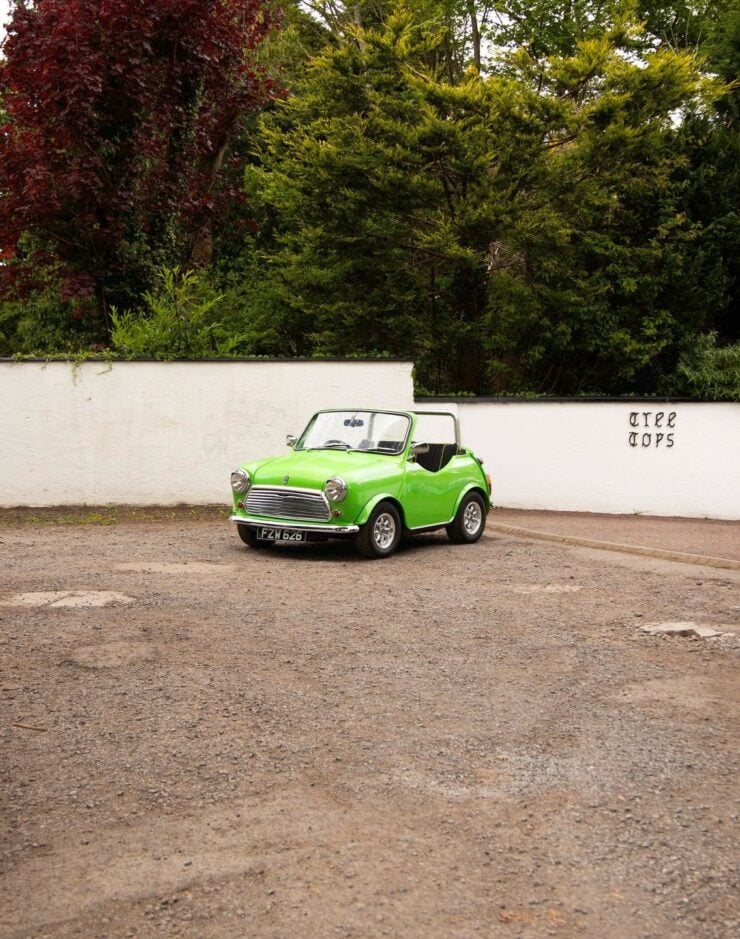
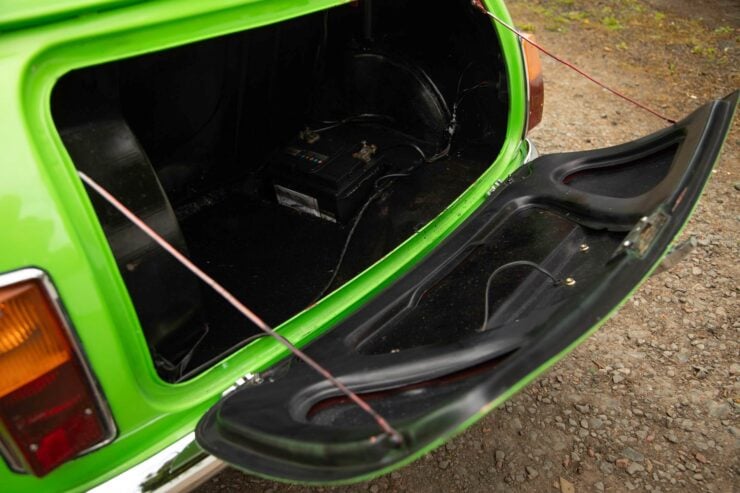
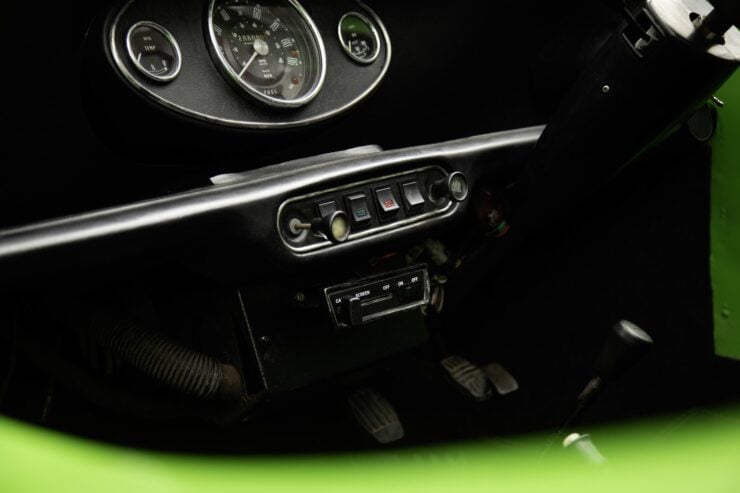
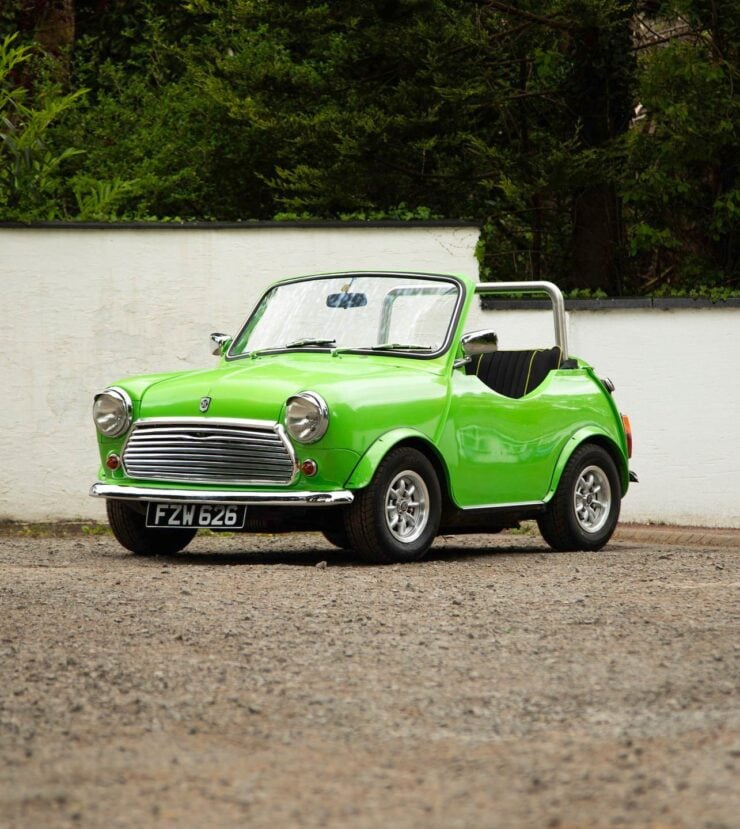
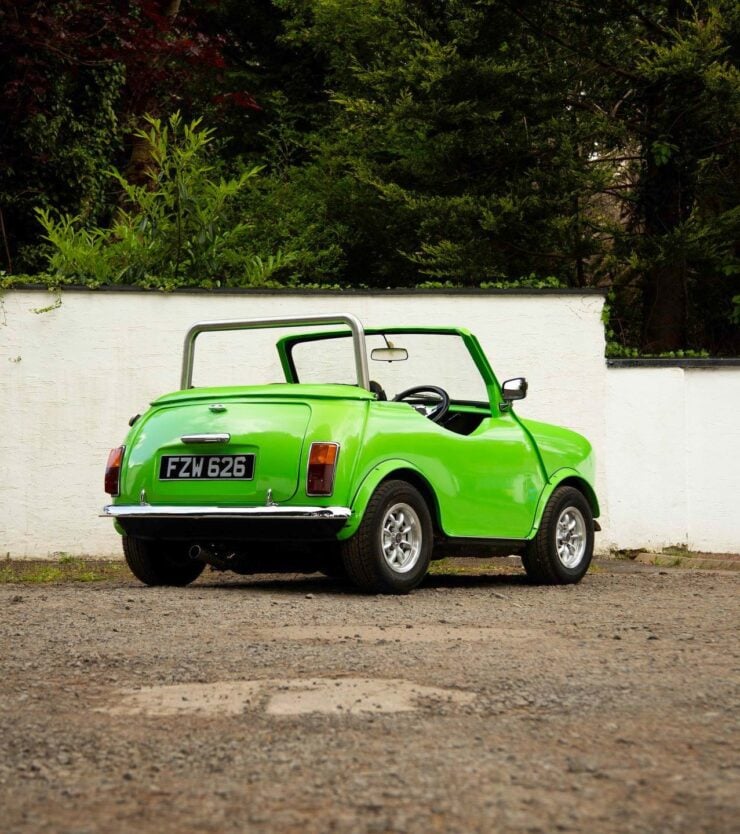
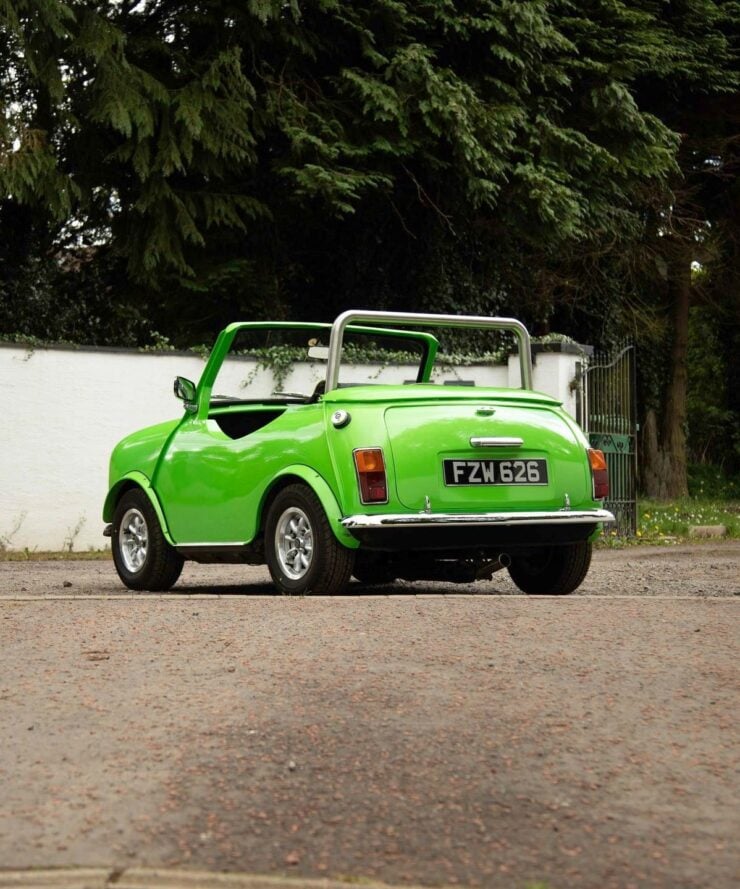
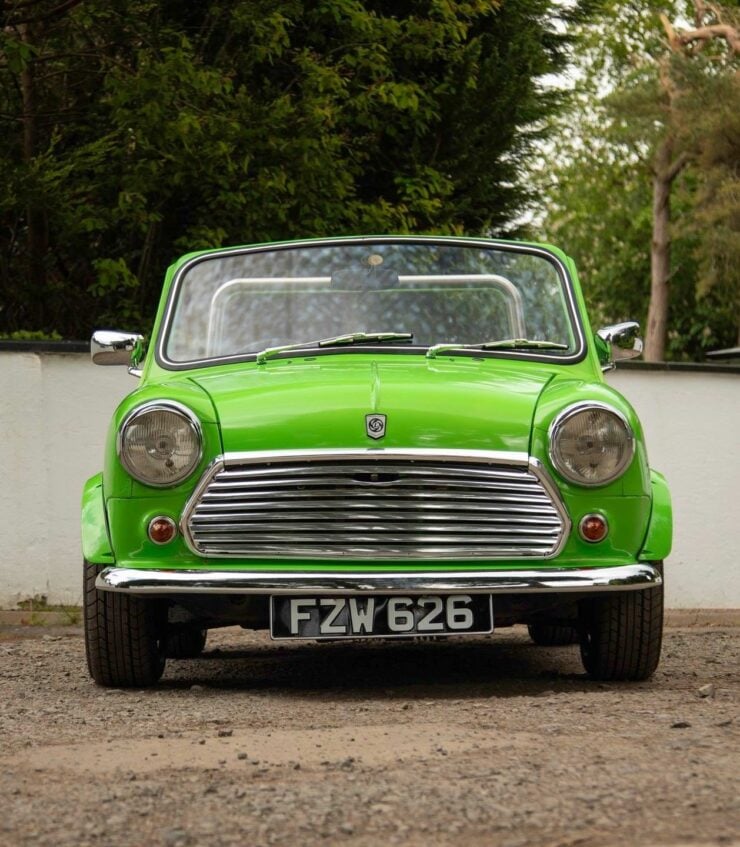
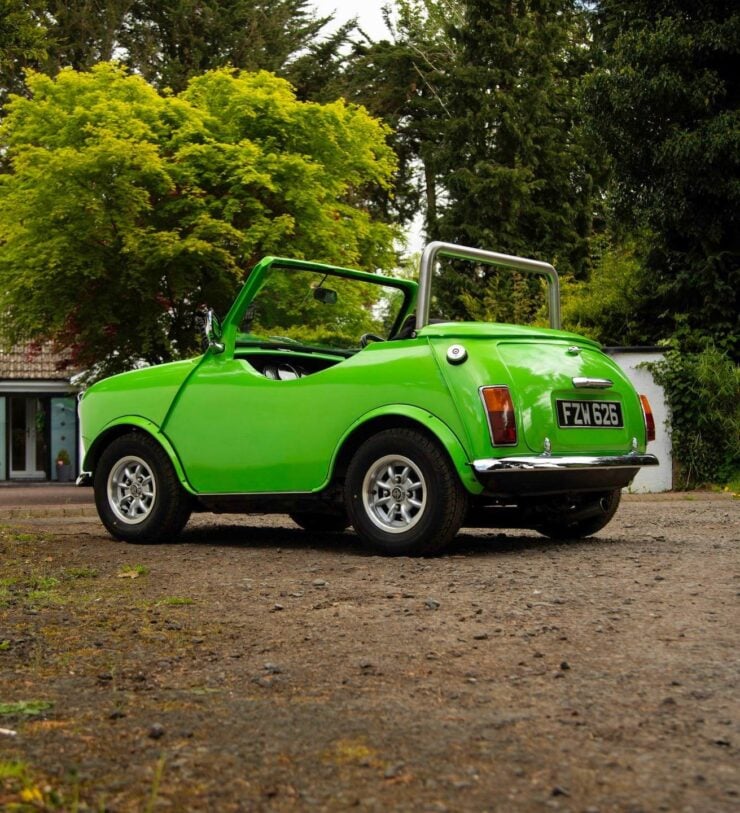
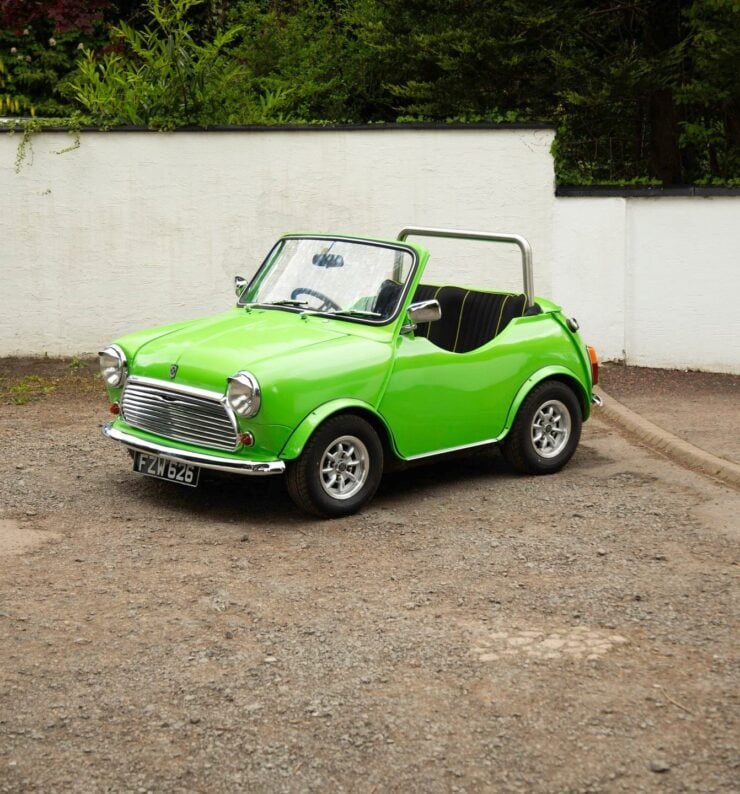
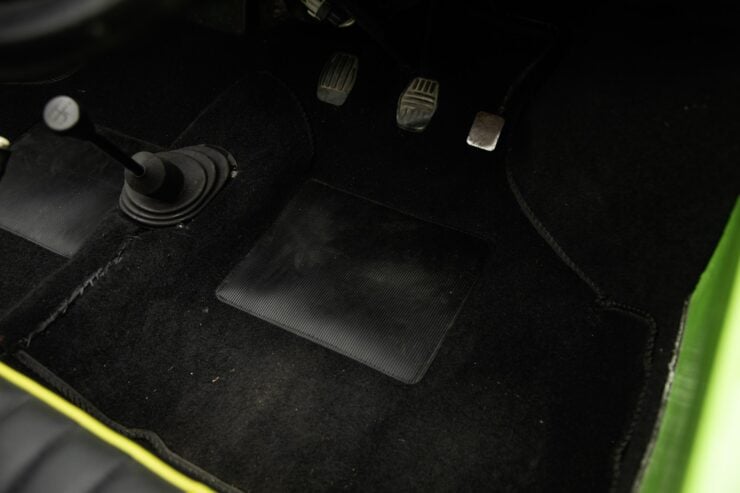
Images courtesy of Car & Classic

